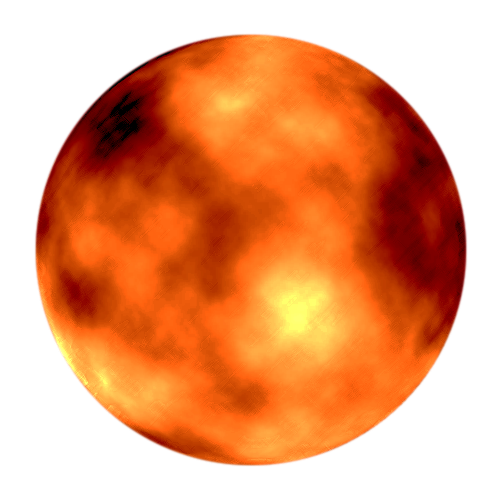
Mars is a small rocky body once thought to be very Earthlike. Like the other terrestrial planets—Mercury, Venus, and Earth—its surface has been changed by volcanism, impacts from other bodies, movements of its crust, and atmospheric effects such as dust storms. It has polar ice caps that grow and recede with the change of seasons; areas of layered soils near the Martian poles suggest that the planet's climate has changed more than once, perhaps caused by a regular change in the planet's orbit.
Martian tectonism, the formation and change of a planet's crust, differs from Earth's. Where Earth tectonics involve sliding plates that grind against each other or spread apart in the seafloors, Martian tectonics seem to be vertical, with hot lava pushing upwards through the crust to the surface.
Periodically, great dust storms engulf the entire planet. The effects of these storms are dramatic, including giant dunes, wind streaks, and wind-carved features.
Water on Mars?
Scientists believe that 3.5 billion years ago, Mars experienced the largest known floods in the solar system. This water may even have pooled into lakes or shallow oceans. But where did the ancient floodwater come from, how long did it last, and where did it go?
At present, Mars is too cold and its atmosphere is too thin to allow liquid water to exist at the surface for long. There's water ice close to the surface and more water frozen in the polar ice caps, but the quantity of water required to carve Mars's great channels and flood plains is not evident on—or near—the surface today. Images from NASA's Mars Global Surveyor spacecraft suggest that underground reserves of water may break through the surface as springs. The answers may lie deep beneath Mars's red soil.
Unraveling the story of water on Mars is important to unlocking its past climate history, which will help us understand the evolution of all planets, including our own. Water is also believed to be a central ingredient for the initiation of life; the evidence of past or present water on Mars is expected to hold clues about past or present life on Mars, as well as the potential for life elsewhere in the universe. And, before humans can safely go to Mars, we need to know much more about the planet's environment, including the availability of resources such as water.
Mountains, Moons, and More
Mars has some remarkable geological characteristics, including the largest volcanic mountain in the solar system, Olympus Mons; volcanoes in the northern Tharsis region that are so huge they deform the planet's roundness; and a gigantic equatorial rift valley, the Valles Marineris. This canyon system stretches a distance equivalent to the distance from New York to Los Angeles; Arizona's Grand Canyon could easily fit into one of the side canyons of this great chasm.
Mars also has two small moons, Phobos and Deimos. Although no one knows how they formed, they may be asteroids snared by Mars's gravity.
